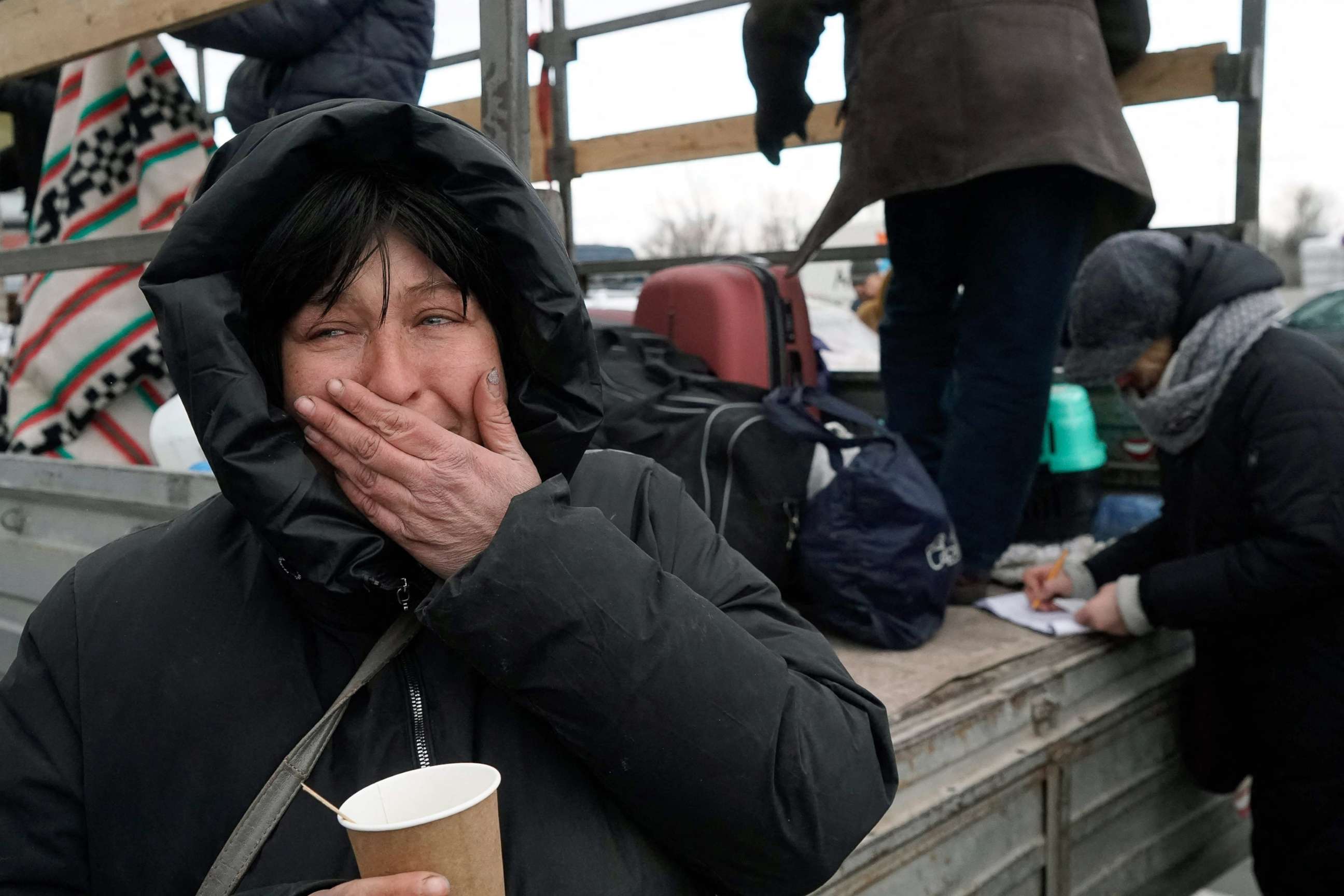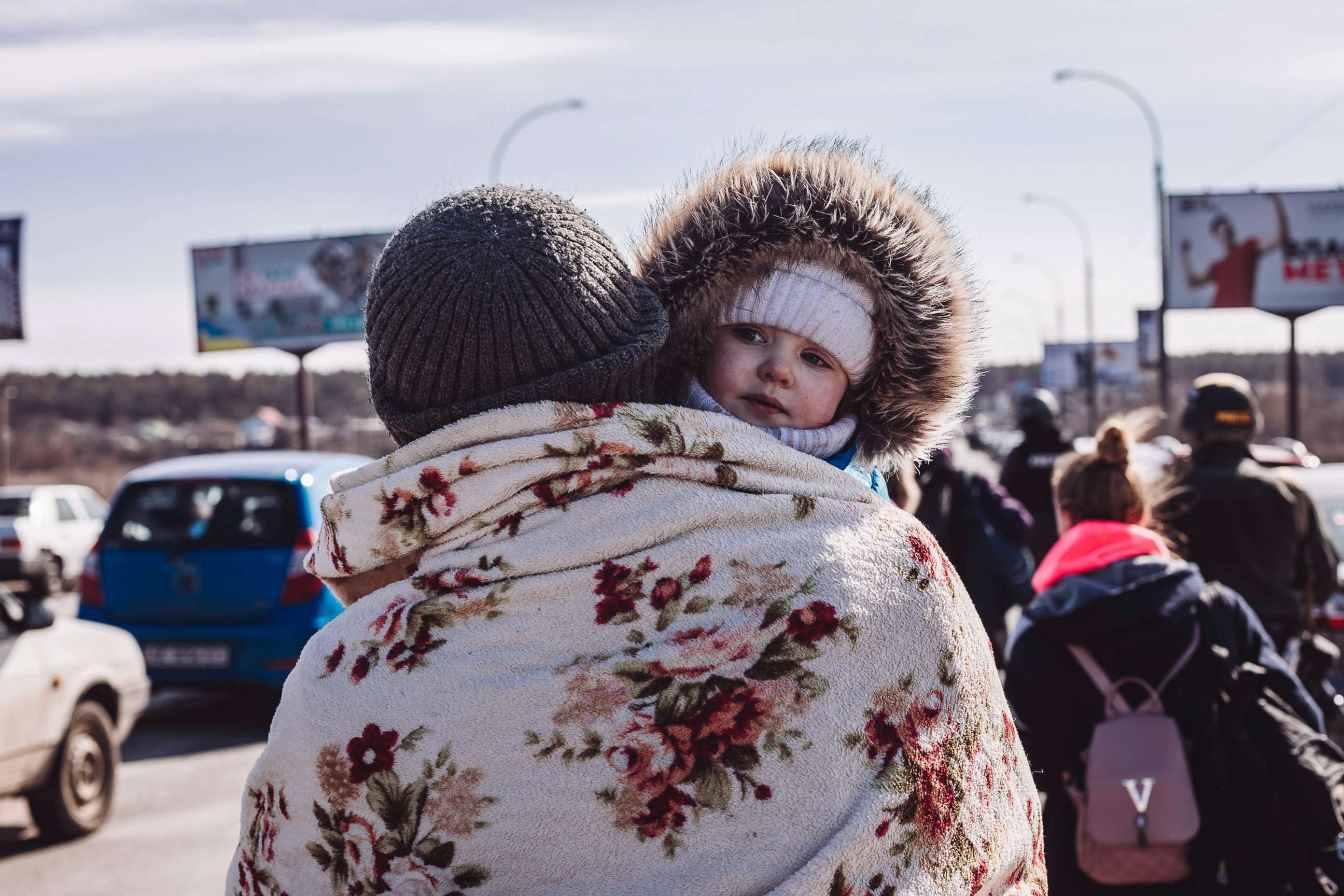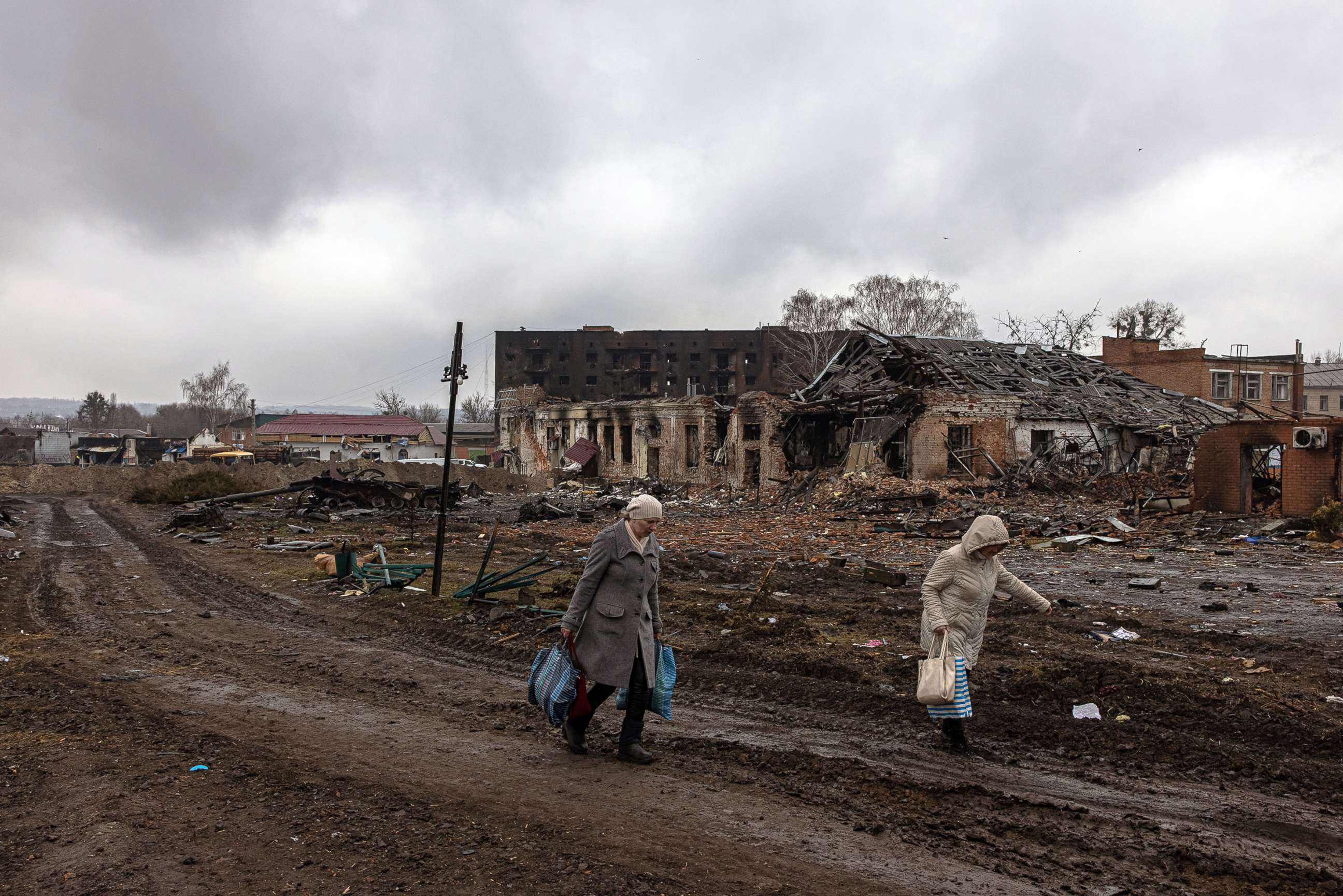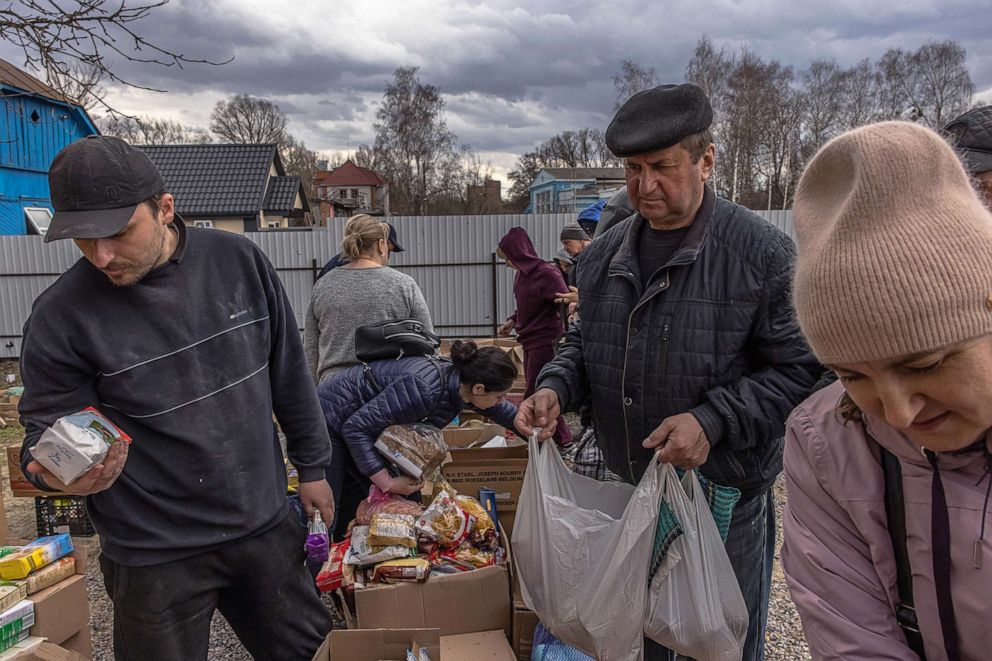How humanitarian corridors work to offer lifeline to besieged Ukrainians
The routes are a "desperate measure in dire times," a Red Cross official said.
For tens of thousands of civilians trapped in active combat zones in Ukraine, the establishment of humanitarian corridors could mean the difference between living and dying, experts said.
At least nine humanitarian corridors are expected to open in war-torn areas of eastern Ukraine this week to allow civilians to escape heavy fighting, Ukrainian Deputy Prime Minister Iryna Vereshchuk said.
More than 4,354 people used the opened humanitarian corridors on Monday to evacuate via buses and private cars, according to Vereshchuk. She said the same safe passages will be open on Tuesday.
But the designated routes out of besieged towns such as Mariupol in southeast Ukraine and areas of the Donbas in eastern Ukraine can be dangerous if not done with precision and complete transparency, Crystal Wells, a spokesperson for the International Committee of the Red Cross, told ABC News.
“We see humanitarian corridors, that we refer to as safe passages, as really a desperate measure in dire times," Wells said.

What is a humanitarian corridor?
Humanitarian corridors are routes for civilians to escape from the most dangerous war zones. The safe passages require Russian and Ukrainian leaders to agree on specific routes and a ceasefire span of time along those thoroughfares to allow civilians a window of opportunity to get out of the crossfire.
Safe passageways during wars date back to World War II, when routes were established to transport 10,000 children from Nazi-controlled countries in humanitarian rescues dubbed "kindertransports." The Geneva Conventions in 1949 also established rules to ensure civilians had access to humanitarian supplies, including food and medicine, during war.
"It’s important, first of all, to remember that civilians are actually protected under international humanitarian law. Those are the laws that govern armed conflict," Wells said. "And civilians should be protected from hostilities whether they’re in their homes, in a hospital, in a school or in a so-called humanitarian corridor."

But Wells said that some humanitarian routes opened in Ukraine had to quickly be closed or not used at all because hostilities resumed.
"It’s not like all of a sudden a humanitarian corridors comes in and it's a magic wand to ending civilian suffering," Wells said. “It's so important that these are agreed on not just in principle but in concrete terms so that it’s not only the people sitting in capital cities who agree. It needs to come down to actionable, concrete, logistical details, and it has to be communicated down the chain of command to the militaries on the ground for these to work safely."
She said if details of a humanitarian corridor, including the precise routes and ceasefire times, are not conveyed to frontline troops, it could create a dangerous -- and deadly -- situation.
“It's not just about the safety of our teams, but it's to not also lead people or accompany people into something where they could be in harm's way," Wells said.
In the absence of humanitarian corridors, Ukrainian civilians have risked their lives trying to flee battle zones on their own. Many have been killed.
“What's been happening in cities like Mariupol is that in the absence of these concrete agreements, you have civilians leaving, but they’re doing so in a very ad hoc way. They’re making a life-and-death decision to go, and there’s not a ceasefire agreement in place and there’s not specifics about routes and the times and all of that. So, it’s very risky for people."
100,000 people trapped in Mariupol
Much of the focus for humanitarian agencies in recent days has been on Mariupol, a port city of nearly 400,000 people that has been under siege since the start of the Russian invasion on Feb. 24.
Mariupol Mayor Vadym Boychenko told the Associated Press by telephone Monday that the death toll in his city has surpassed 10,000 and could reach double that as attacks continue. Boychenko also alleged Russian forces have brought mobile crematoriums to Mariupol to collect and incinerate civilian bodies in an attempt to cover up evidence of war crimes.

Russia has denied committing atrocities in Ukraine and claims it is not targeting civilians.
Vereshchuk said in a statement posted on social media Monday that humanitarian evacuation routes were agreed upon for those traveling by private cars from Mariupol.
Wells estimated that more than 100,000 civilians remain in Mariupol.
"For us, Mariupol really remains very much a focus and a priority," Wells said. "That’s a city that’s been for weeks now without any humanitarian aid. They’ve been for weeks now without really any proper safe passage for civilians out of the city."
She said ICRC teams have been trying for weeks to deliver humanitarian aid to Mariupol without success.
"We tried again a couple of Fridays ago to access Mariupol, and our teams spent five days and five nights on the road trying to get into the city, and security conditions didn’t allow it," Wells said.
Successful humanitarian corridors
Wells said the ICRC has successfully used designated safe passages to get civilians out of the hard-hit town of Sumy in northeast Ukraine and between the Russian-controlled city Berdyansk to safety in Zaporizhzhia, a roughly 120-mile journey.
She said an unarmed ICRC convoy from Berdyansk to Zaporizhzhia last week included buses and Red Cross land cruisers clearly marked with the agency's emblem at the front and rear of the caravan. Wells said many of the civilians who joined the convoy were fleeing Mariupol.

"We had seven buses with seven volunteer bus drivers, and that would allow about 350 people to board," Wells said. "But then we had private cars starting to join the convoy from Berdyansk all the way to Zaporizhzhia. By the end of that convoy to Zaporizhzhia, they estimated there were about 100 civilian cars, which got us up to about 1,000 people."
Wells said the evacuation from Berdyansk to Zaporizhzhia took two days. She said a similar mission in Mariupol would likely take longer.
"To think of doing it for 100,000 people, we would really need agreements to hold for not just hours, but days," Wells said.
No matter how much time is granted to the humanitarian corridors, Wells said some civilians are bound to get left behind.
"What about the elderly? What about people with disabilities? Not everyone is able-bodied to get into their own car or board a bus and leave," Wells said. "So, that’s where it’s also important that aid needs to be brought into these places as well and that civilians still have to be protected and respected from hostilities."




